June 15, 2025 | 00:25 GMT +7
June 15, 2025 | 00:25 GMT +7
Hotline: 0913.378.918
June 15, 2025 | 00:25 GMT +7
Hotline: 0913.378.918
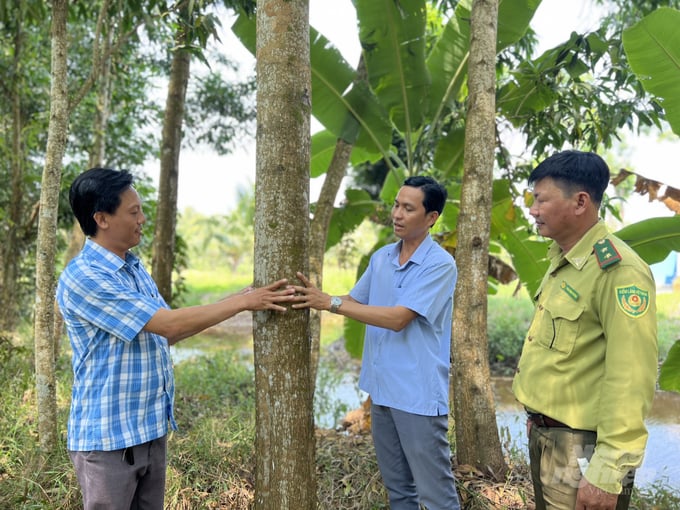
5-year-old Acacia hybrid tree at Song Trem eco-tourism area in U Minh district. Photo: Trong Linh.
U Minh is an impoverished district in Ca Mau province surrounded by melaleuca, overgrown reeds, and heavily contaminated water. Many local people's lives under the mangrove canopy face constant hardship with some moving away from the district due to the strain of living.
However, the government and its sectors has given more attention to the development of the forest economy in recent years. Additionally, local people and forest owners are boldly investing in new afforestation models, converting plant varieties and livestock, and combining the exploitation of products under the mangrove canopy. Consequently, the standard of living for people in the area have improved remarkably.
Mr. Nguyen Van Nhanh in hamlet 12, Khanh Lam commune, U Minh district, currently has over 42 hectares of forest land. He has planted 36 hectares of Australian Melaleuca and 6 hectares of acacia hybrid. He also grows bananas and acacia hybrids on the surrounding banks as an opportunity to increase his family's income. Mr. Nhanh's has recently finished harvesting 10 hectares of Melaleuca trees, earning a profit of at least VND
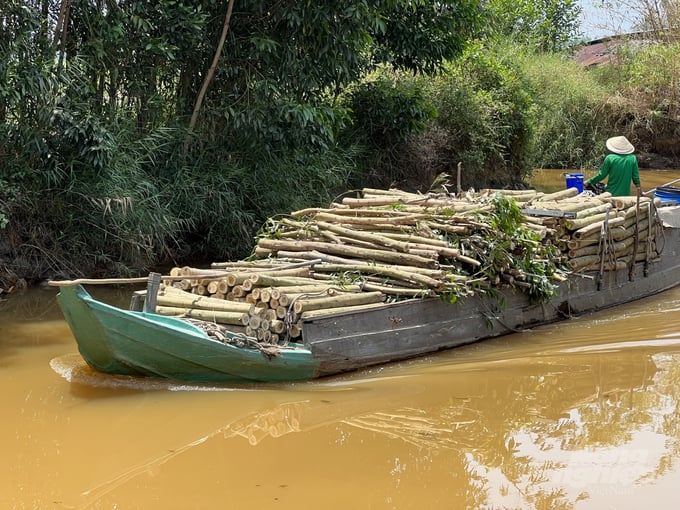
According to Ca Mau province's forestry sector, acacia hybrid trees are currently benefitting from a high economic value as well as a stable output market. Photo: Trung Chanh.
Mr. Nhanh said: “My family begins planting immediately after harvesting, and then we harvest once every 4 to 5 years. The family has also planted 10 hectares of Australian Melaleuca trees. We earn between 80 and 85 million VND for each harvested hectare, so 10 hectares of Melaleuca brought in over 800 million VND in profit.
Mr. Vo Minh Giau in hamlet 12, Khanh Lam commune, U Minh district, has recently harvested 16 out of 22 total hectares of the family's Melaleuca forest, generating a considerable income. These stories prove that the forest economy is growing more effective in recent years, providng the locals with a good source of income. In addition to the forest as the main source of income, locals also benefit greatly from natural resources found under the mangrove canopy such as: field fish, honey among many others.
Mr. Vo Minh Giau shared his opinion on the economic efficiency of forests in recent years: people in the U Minh Ha area are poverty-stricken. But after the government invested extensively in forest development policies, local people have managed to stabilize their livelihoods, pay off bank debts, and build spacious houses.

According to many households in the U Minh Ha forest stand, the price of Melaleuca has dropped sharply since the beginning of the Covid-19 pandemic. Subsequently, each hectare of Melaleuca onlyyielded a profit of between 50 and 60 million VND. Prior to the pandemic, the profit is three times higher at between 160 and 200 million VND per hectare. Photo: Trong Linh.
Mr. Nhanh and Mr. Giau are examples of people's great efforts in overcoming difficulties to earn a living from forest land. The price of Melaleuca trees has declined in recent years, resulting in lowered income for the people. However, people's lives under the mangrove canopy have been significantly improved. Many households have boldly invested in developing hybrid acacia trees with a higher economic value to compensate for the decreased value of Melaleuca trees.
On the other hand, people are also actively investing in developing more combine economic models under the mangrove canopy such as: utilizing the surrounding banks to grow crops and bananas, or renting the embankments of the forest stand in U Minh Ha National Park to grow bananas for leaves. Each household, on average, rents between 5 and 10km of embankment with a monthly price of 800 VND/km. These models have brought the local excellent additional sources of income.
Ms. Nguyen Hai Van in hamlet 13, Khanh An commune is currently renting the banks of U Minh Ha National Park to grow bananas for leaves. Ms. Van reported that her family earns 1 million dong in profit from peeled banana leaves. Excluding the sale of bananas, Ms. Van's family makes roughly 50 million VND per month.
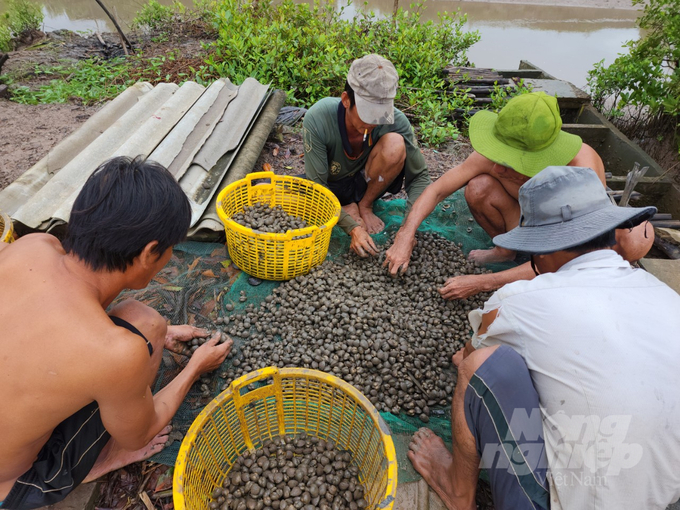
People also earn high profits from farming blood cockles, clams, shrimps, crabs, fish, etc., under the mangrove canopy. Photo: Trung Chanh.
People under the mangrove canopy have also boldly adjusted their production models. The majority of the agricultural production area was attached with forest land mainly in the past. Following ineffective rice production on the forest land, many households have invested in developing combined production models such as growing tubs, water lilies and raising fish, to great success. Additionally, the models help farmers commit short-term investment for long-term goals.
Mr. Nguyen Chi Tam in hamlet 13, Khanh An commune, U Minh district said: “Growing tubs, water lily in combination with fish farming brings the family an income of over 300 million VND every year".
Mr. Ngo Thanh Phong, Chairman of Khanh An Commune People's Committee commented on the economic efficiency of the forest: In addition to growing acacia hybrid and melaleuca in the afforestation area under the mangrove canopy, people utilize the banks to grow bananas and coconuts, and fish in the ponds. This combined model brings a stable monthly income of at leaset 10 million VND for each household.
Furthermore, the forest also provides people with many valuable natural resources including field fish, eels, turtles, snakes, honey bees, etc. A beekeeping household under the mangrove canopy can collect hundreds of liters of honey annually.
Honey has become a signature gift product of U Minh forest. It is ranked among the top 100 specialty gifts of Vietnam, so the value of U Minh Ha forest honey is increasing rapidly.
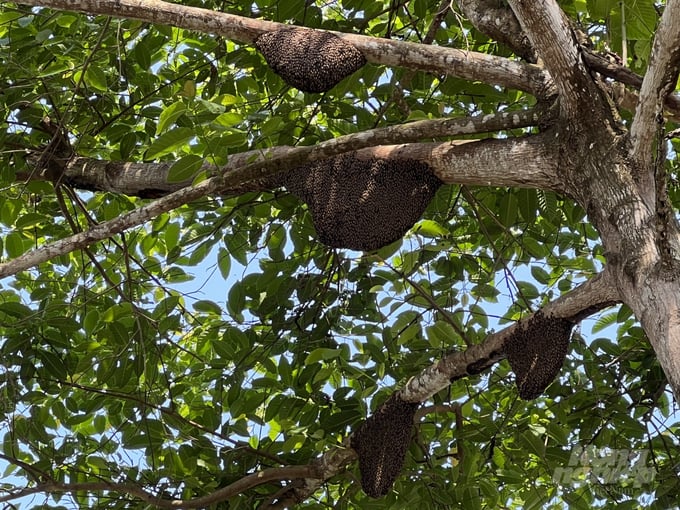
Thanks to the expansion of eco-tourism development in recent years, the profession of beekeeping has become widely known, so the economic value of honey bees is very high. Photo: Trong Linh.
Mr. Tran Van Nhi, a beekeeper in Hamlet 1, Nguyen Phich Commune said: His family has harvested 200 liters of honey since the beginning of the year. Due to a lack of connection to the market in the past, honey bees were sold at low prices. After the government invested in developing eco-tourism, more tourists have visited the U Minh Ha National Park. Consequently, local products have been promoted, and many orders were placed for honey bees from Can Tho city, Ho Chi Minh, city, etc. The price of honey has now remained stable at an average of 500,000 VND per liter.
Mr. Le Hong Thinh, Vice Chairman of U Minh District People's Committee, shared: The district has a total natural area of 77,155 hectares; including nearly 44,000 hectares of forestry land area, more than 38,600 hectares of production forest land area.
U Minh district has continuously raised awareness and promoted education, creating a strong change in the responsibility for forest protection and development. It is clear that the forest plays an important role in socio-economic development, protecting the ecological environment and limiting the negative effects of climate change.
According to Mr. Thinh, U Minh district is coordinating with relevant departments at the provincial level to finalize the sustainable forest management plan, as well as the assessment and certification for sustainable forest management. Moreover, the district aims to establish an economic model of cooperation and association along the product value chain in forestry for businesses as well as households.
On the other hand, U Minh district will engage in trade promotion and product introduction: encourage businesses and cooperatives to participate in fairs to introduce products posted on the district's website. Large forest timber brings a 30% higher economic value compared to that of Melaleuca and mangrove trees, and the output is relatively stable. However, the land of U Minh district is a soft and low, so growing large timber is not feasible.
The district will collaborate with Ca Mau Province Sub-Department of Forest Protection to organize capacity building training for forestry production households, forest management units, businesses, local authorities involved in forest management. The training will provide forest growers with knowledge of sustainable forest management, protection and development, forest certification, quality improvement of seedlings; techniques for planting large timber forests, converting small timber to large timber forests.
“The development of the forest economy has led to the improvement of people's lives under the mangrove canopy. Spacious new houses is a common sight in vast forest areas. The traffic system is optimized, and electricity is provided to every household. The impoverished countryside is now a sight of the past", said Mr. Le Hong Thinh.
Translated by Nguyen Hai Long
![Turning wind and rain into action: [4] Bringing climate bulletins to remote and isolated areas](https://t.ex-cdn.com/nongnghiepmoitruong.vn/608w/files/linhnhp/2025/06/14/1152-z6704423696987_15fd32ffc26d590d204d520c9dac6786-nongnghiep-151141.jpg)
(VAN) The Vietnam Agriculture and Nature Newspaper interviewed Mr. Vu Thai Truong, Acting Head of Climate Change and Environment at UNDP Vietnam, to gain deeper insight into how climate bulletins are delivered to farmers.

(VAN) In Tien Giang, a high-tech shrimp farm has developed a distinctive energy-saving farming model that has yielded promising results.
![Turning wind and rain into action: [3] 300.000 farmers benefit from agro-climatic bulletins](https://t.ex-cdn.com/nongnghiepmoitruong.vn/608w/files/news/2025/06/12/e5a48259d6a262fc3bb3-nongnghiep-125122.jpg)
(VAN) The agro-climatic bulletin has become a valuable tool for farmers in the Mekong Delta. After more than five years of implementation, the initiative is gradually being expanded nationwide.
![Turning wind and rain into action: [2] Providing forecasts to the people](https://t.ex-cdn.com/nongnghiepmoitruong.vn/608w/files/news/2025/06/12/e5a48259d6a262fc3bb3-nongnghiep-103927.jpg)
(VAN) In addition to improving the quality of hydrometeorological forecasts, putting forecast bulletins into practical use is crucial for production and disaster prevention.
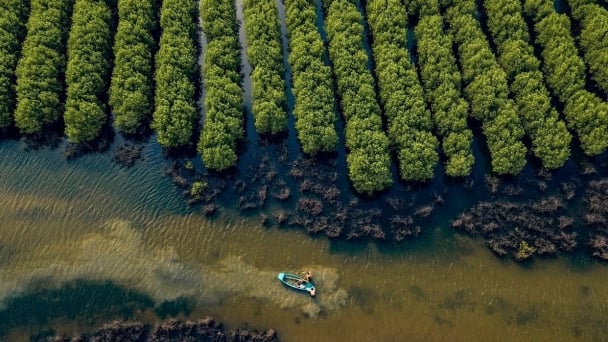
(VAN) Blue carbon is receiving attention for its rapid absorption capacity and vast potential. It represents a promising nature-based solution to respond to climate change.
/2025/06/11/3507-1-161904_583.jpg)
(VAN) Seagrass beds and coral reefs serve as 'cradles' that nurture life in the ocean depths, creating rich aquatic resources in Vietnamese waters.
![Turning wind and rain into action: [1] Forecasting for farmers](https://t.ex-cdn.com/nongnghiepmoitruong.vn/608w/files/news/2025/06/11/e5a48259d6a262fc3bb3-nongnghiep-111919.jpg)
(VAN) Weather is no longer just a matter of fate. Forecasts have now become an essential companion for farmers in every crop season.